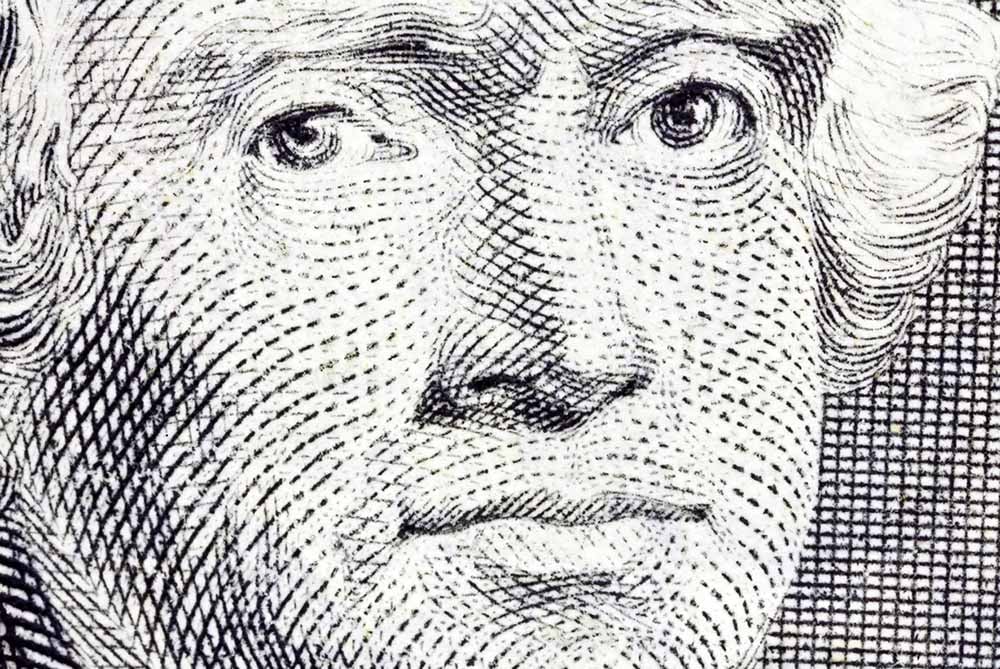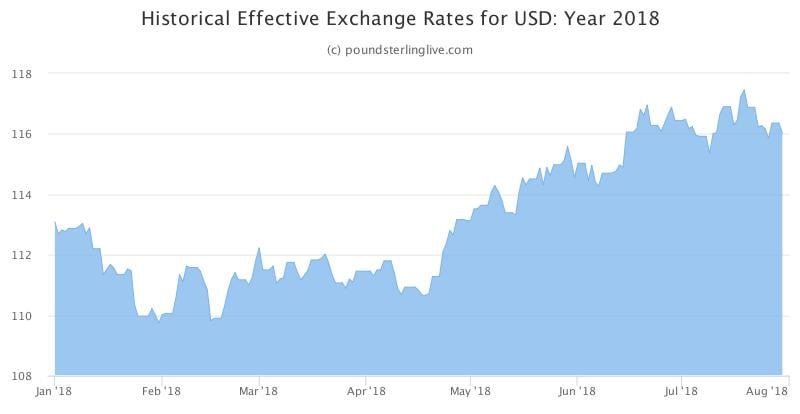US Dollar to Dominate Currency Markets Until New Year say Capital Economics
- Written by: James Skinner
-USD to persist until mid 2019 say Capital Economics et al.
-Superior US growth and Fed rate rises will be the key driver.
-But 2019 to bring end of Fed tightening and a USD decline.

© Adobe Stock
The Dollar will reign supreme over currency markets well into the New Year, according to Capital Economics, as superior economic growth enables the Federal Reserve to go on raising interest rates at a time when the outlook for the rest-of-world economy is becoming increasingly clouded.
US GDP grew at an annualised pace of 4% during the second quarter, its fastest in more than four years, while similarly robust growth in consumer spending for the month of June has put the economy on the front foot at the beginning of the third quarter too.
These developments have come at a time when currency markets are taking their lead from the relative performances of national economies. And as the Eurozone economy continues to show signs of fatigue, while President Donald Trump's "trade war" hangs over the Chinese economy like a Damocles Sword.
"We think that the greenback will remain strong over the rest of this year, as the healthy US economy allows the Fed to keep hiking, but we suspect that it will fall back in 2019," says Oliver Jones, an economist at Capital Economics.
The US Dollar has converted what was a 4% 2018 loss into a 3.4% profit during the months since the middle of April, following a sustained rally that drew a line beneath a prior 12-month period of heavy losses.

Above: US Dollar performance against basket of currencies in 2018.
Most analysts now agree that the mismatch between economic growth in the US and the rest of the world has incentivised traders into selling other developed world currencies and buying US Dollars.
The Federal Reserve has raised interest rates seven times since the end of 2015, taking the Federal Funds rate range to between 1.75% and 2%.
Many economists expect it to raise rates so that the top end of that range hits 3.25% around the end of 2019, although pricing in interest rate derivatives markets suggests traders are reluctant to bet heavily on 2019 interest rates.
"We continue to forecast that the Fed will raise rates twice more this year. Since this is still not fully discounted in markets, we suspect that interest rate expectations in the US will rise, supporting the currency. By the middle of next year, though, we think that a slowdown in the US economy will bring the Fed’s tightening cycle to an end," Jones adds.
Jones and the Capital Economics team say that an end to the Federal Reserve's push to raise interest rates would be likely to undermine the US Dollar as it would cause relative interest rate expectations to move against the greenback.
After all, the European Central Bank has suggested to markets on several occasions in recent months that it could be in a position to begin raising its interest rate from post-crisis lows as soon as "the end of summer" 2019.
Meanwhile, and as much as uncertainty over the Brexit negotiations could scupper further moves over the short term, the Bank of England has already committed itself to raising UK interest rates off of their post-crisis lows.

Above: US Dollar performance relative to G10 rivals in 2018.
With rates at both central banks still nailed to a proverbial floor, there is scope for more rate rises in the UK and Europe ahead than there is in the US, which is something that will eventually support the Pound and Euro against the Dollar. The one uncertainty that remains is the exact timing of this shift.
Changes in interest rates, or hints of them being in the cards, are only made in response to movements in inflation but impact currencies because of the push and pull influence they have on international capital flows and their allure for short-term speculators.
"We have been more optimistic than the consensus on the US economy and we remain so," says Athanasios Vamvakidis, an FX strategist at Bank of America Merrill Lynch. "We see further USD strength over coming months and recently made upward revisions to our 2018 profile. We expect US data to continue improving as fiscal stimulus boosts the economy."
Back in 2017 Vamvakidis and the Bank of America team were among the first, if not actually the first, to predict the US Dollar rally currently underway. This was a bold call at the time, given the US Dollar had fell by around 10% that year and most forecasts were for it to lose further ground in 2018.
They also advocated, back in April, that clients of the bank bet on a fall to 1.15 for the Euro-to-Dollar rate. It was trading above the 1.23 threshold at the time, but was quoted 0.27% lower at 1.1534 Monday. Vamvakidis now predicts the EUR/USD rate will fall to 1.12 by the end of September and that it will rise back to only 1.14 before year-end.
Advertisement
Get up to 5% more foreign exchange by using a specialist provider to get closer to the real market rate and avoid the gaping spreads charged by your bank when providing currency. Learn more here




